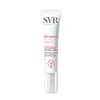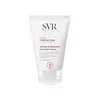What's inside
What's inside
 Key Ingredients
Key Ingredients

 Benefits
Benefits

 Concerns
Concerns

 Ingredients Side-by-side
Ingredients Side-by-side

Water
Skin ConditioningPropanediol
SolventHydrogenated Polydecene
EmollientCyclopentasiloxane
EmollientOrbignya Oleifera Seed Oil
EmollientPolyacrylamide
Behenyl Alcohol
EmollientCaprylic/Capric Triglyceride
MaskingDipotassium Glycyrrhizate
HumectantSaccharide Isomerate
HumectantSodium Hyaluronate
HumectantTocopheryl Acetate
Antioxidant1,2-Hexanediol
Skin ConditioningC13-14 Isoparaffin
EmollientCaprylyl Glycol
EmollientCeteareth-20
CleansingCitric Acid
BufferingGossypium Herbaceum Seed Oil
Skin ConditioningLaureth-7
EmulsifyingPentylene Glycol
Skin ConditioningSodium Citrate
BufferingSodium Polyacrylate Starch
AbsorbentWater, Propanediol, Hydrogenated Polydecene, Cyclopentasiloxane, Orbignya Oleifera Seed Oil, Polyacrylamide, Behenyl Alcohol, Caprylic/Capric Triglyceride, Dipotassium Glycyrrhizate, Saccharide Isomerate, Sodium Hyaluronate, Tocopheryl Acetate, 1,2-Hexanediol, C13-14 Isoparaffin, Caprylyl Glycol, Ceteareth-20, Citric Acid, Gossypium Herbaceum Seed Oil, Laureth-7, Pentylene Glycol, Sodium Citrate, Sodium Polyacrylate Starch
Water
Skin ConditioningEthylhexyl Stearate
EmollientButyrospermum Parkii Butter
Skin ConditioningGlyceryl Stearate
EmollientCaprylic/Capric Triglyceride
MaskingGlycerin
HumectantPEG-100 Stearate
Ammonium Acryloyldimethyltaurate/Vp Copolymer
Camelina Sativa Seed Oil
Skin ConditioningHelianthus Annuus Seed Oil
EmollientTocopherol
AntioxidantTocopheryl Acetate
Antioxidant1,2-Hexanediol
Skin ConditioningArachidyl Alcohol
EmollientArachidyl Glucoside
EmulsifyingBehenyl Alcohol
EmollientCitric Acid
BufferingO-Cymen-5-Ol
AntimicrobialSodium Benzoate
MaskingParfum
MaskingWater, Ethylhexyl Stearate, Butyrospermum Parkii Butter, Glyceryl Stearate, Caprylic/Capric Triglyceride, Glycerin, PEG-100 Stearate, Ammonium Acryloyldimethyltaurate/Vp Copolymer, Camelina Sativa Seed Oil, Helianthus Annuus Seed Oil, Tocopherol, Tocopheryl Acetate, 1,2-Hexanediol, Arachidyl Alcohol, Arachidyl Glucoside, Behenyl Alcohol, Citric Acid, O-Cymen-5-Ol, Sodium Benzoate, Parfum
 Reviews
Reviews

Ingredients Explained
These ingredients are found in both products.
Ingredients higher up in an ingredient list are typically present in a larger amount.
1,2-Hexanediol is a synthetic liquid and another multi-functional powerhouse.
It is a:
- Humectant, drawing moisture into the skin
- Emollient, helping to soften skin
- Solvent, dispersing and stabilizing formulas
- Preservative booster, enhancing the antimicrobial activity of other preservatives
Behenyl Alcohol is a type of fatty alcohol (these are different from the drying, solvent alcohols).
Fatty Alcohols have hydrating properties and are most often used as an emollient or to thicken a product. They are usually derived from natural fats and oils; behenyl alcohol is derived from the fats of vegetable oils.
Emollients help keep your skin soft and hydrated by creating a film that traps moisture in.
In 2000, Behenyl Alcohol was approved by the US as medicine to reduce the duration of cold sores.
Learn more about Behenyl AlcoholThis ingredient is an emollient, solvent, and texture enhancer. It is considered a skin-softener by helping the skin prevent moisture loss.
It helps thicken a product's formula and makes it easier to spread by dissolving clumping compounds.
Caprylic Triglyceride is made by combining glycerin with coconut oil, forming a clear liquid.
While there is an assumption Caprylic Triglyceride can clog pores due to it being derived from coconut oil, there is no research supporting this.
Learn more about Caprylic/Capric TriglycerideCitric Acid is an alpha hydroxy acid (AHA) naturally found in citrus fruits like oranges, lemons, and limes.
Like other AHAs, citric acid can exfoliate skin by breaking down the bonds that hold dead skin cells together. This helps reveal smoother and brighter skin underneath.
However, this exfoliating effect only happens at high concentrations (20%) which can be hard to find in cosmetic products.
Due to this, citric acid is usually included in small amounts as a pH adjuster. This helps keep products slightly more acidic and compatible with skin's natural pH.
In skincare formulas, citric acid can:
While it can provide some skin benefits, research shows lactic acid and glycolic acid are generally more effective and less irritating exfoliants.
Most citric acid used in skincare today is made by fermenting sugars (usually from molasses). This synthetic version is identical to the natural citrus form but easier to stabilize and use in formulations.
Read more about some other popular AHA's here:
Learn more about Citric AcidTocopheryl Acetate is AKA Vitamin E. It is an antioxidant and protects your skin from free radicals. Free radicals damage the skin by breaking down collagen.
One study found using Tocopheryl Acetate with Vitamin C decreased the number of sunburned cells.
Tocopheryl Acetate is commonly found in both skincare and dietary supplements.
Learn more about Tocopheryl AcetateWater. It's the most common cosmetic ingredient of all. You'll usually see it at the top of ingredient lists, meaning that it makes up the largest part of the product.
So why is it so popular? Water most often acts as a solvent - this means that it helps dissolve other ingredients into the formulation.
You'll also recognize water as that liquid we all need to stay alive. If you see this, drink a glass of water. Stay hydrated!
Learn more about Water